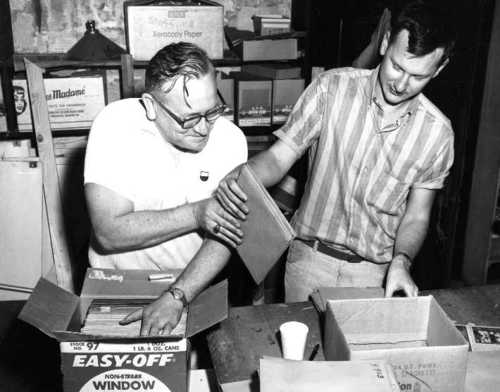
Neatly stacked on shelves, or presented to researchers in well organized containers, archival collections in repositories conceal a past that is frequently gritty and disarrayed. The effort of producing an inventoried, reboxed, properly labeled body of primary source material is hidden from the researcher by the antiseptic neatness of its presentation in the reading room.
While inventories may suggest that processing the material occupied months (or even years) of staff time, even that statement glosses over the sheer physical labor of moving boxes from where they might have been stored (be that basement, attic, barn, or shed) to the library or archives. Nor is the subsequent shelving of the accessioned materials, their transport to the workroom for processing, a three stage pass for processing, reboxing and reshelving. A thirty-five pound box quickly (or more likely slowly) becomes 280 pounds when moved several times.
Documenting this effort in more than vague generalities is seldom undertaken. A photograph of the process is not a necessary part of the mechanics of acquiring, arranging, and describing primary source material. In this photograph we catch a glimpse of the early stages in the process. Here, Special Collections Librarian Charles A. Webbert, assisted by Librarian Paul Conditt, pack the first shipment of an estimated 100,000 glass and film negatives produced by the Barnard Studio of Wallace, Idaho over a ninety year period. The darkness, dust, and claustrophobic closeness of the space is, however, only hinted at; making this less a true picture of the experience and more another example of the effort to keep hidden the essential physicalness of the work of guarding and preserving Idaho’s heritage.
Written in 1999 for the UI Library's Digital Memories website.
